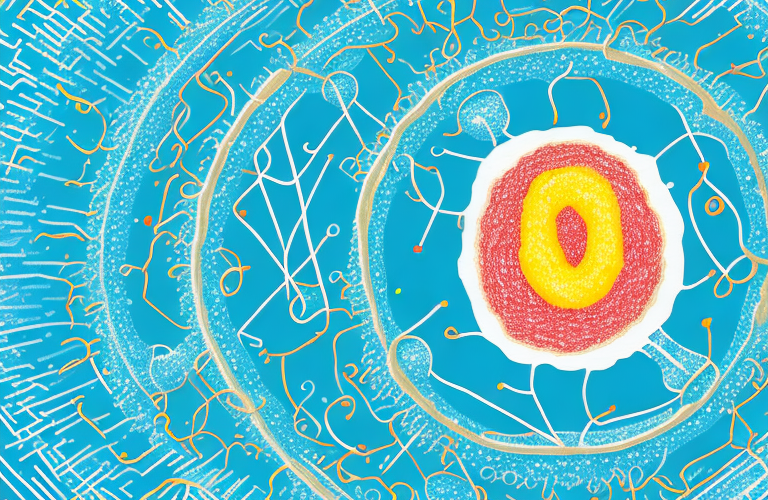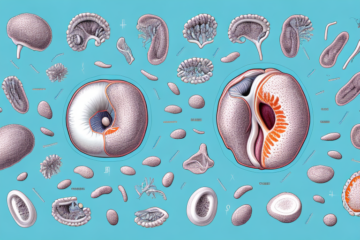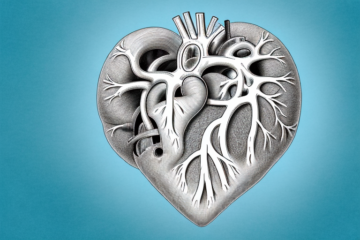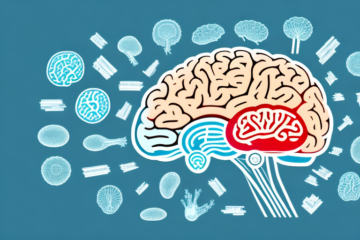Yeast infections are a common and uncomfortable condition that affect a large number of women worldwide. They can manifest in different ways, but all types of yeast infections share similar causes and symptoms. In this article, we’ll take an in-depth look at yeast infections, what causes them, how to diagnose and treat the symptoms, as well as explore preventative measures. We’ll also cover some of the less common but crucial information about yeast infections, such as when they pose the greatest risk and who is more susceptible to them. So, read on if you’d like to learn more.
Understanding Yeast Infections: An Overview
Yeast infections are also known as Candida overgrowth, vaginal candidiasis, or moniliasis. They occur when there’s an overgrowth of candida, which is a type of fungus commonly found in the vagina, mouth, and intestinal tract. Candida exists harmlessly in small quantities in all humans but can grow out of control if the conditions in the body become unbalanced, mostly the pH level. When this happens, an uncomfortable yeast infection can occur. Although yeast infection can affect anyone, it is more prevalent amongst women and can occur in different parts of the body, including the female genitalia, mouth, armpits, and toenails.
Some of the common symptoms of yeast infections include itching, burning, and soreness in the affected area. In women, yeast infections can also cause vaginal discharge and pain during sexual intercourse. While yeast infections are not usually serious, they can be uncomfortable and can affect a person’s quality of life. Treatment for yeast infections typically involves antifungal medications, which can be taken orally or applied topically to the affected area. It’s also important to maintain good hygiene and avoid using scented products in the affected area to prevent further irritation.
The Science Behind Yeast Infections: What Causes Them?
Yeast infections can be caused by different things. The most common cause is a change in the pH level in the vagina. This could be due to hormonal changes, antibiotic use, exposure to certain chemicals, or anything that alters the natural balance of the body. Taking birth control pills, pregnancy, and diabetes could also increase the risk of developing a yeast infection. If you wear damp or tight clothing for extended periods, you might also be prone to a yeast infection, as the moisture could encourage the growth of candida. It is also crucial to note that a yeast infection is not a sexually transmitted disease, but it can be transmitted sexually.
Another factor that can contribute to yeast infections is a weakened immune system. When your immune system is compromised, it becomes easier for candida to grow and cause an infection. This can happen due to illnesses such as HIV/AIDS, cancer, or autoimmune diseases. Stress and lack of sleep can also weaken the immune system, making you more susceptible to yeast infections.
It is important to note that yeast infections can occur in other parts of the body, not just the vagina. For example, oral thrush is a type of yeast infection that affects the mouth and throat. It is caused by an overgrowth of candida in the mouth and can be common in babies, people with weakened immune systems, and those who wear dentures. Skin yeast infections are also possible, especially in areas where there are folds of skin, such as the armpits or groin.
Yeast Infection Symptoms You Shouldn’t Ignore
Yeast infections can cause several symptoms, including intense itching, burning, swelling, and redness in the affected area. Additionally, a thick white discharge, sometimes resembling cottage cheese, might appear. If you’re experiencing any of these symptoms, it’s essential to get checked by a healthcare provider to ensure an accurate diagnosis.
It’s important to note that yeast infections can also cause discomfort during sexual intercourse and urination. Some people may also experience a rash or soreness on the skin surrounding the affected area. If you notice any of these symptoms, it’s crucial to seek medical attention promptly to prevent the infection from worsening or spreading to other parts of the body.
Common Triggers of Yeast Infections That You Need to Know
Several factors can trigger a yeast infection, and it’s crucial to understand them to prevent future episodes. Some of the most common triggers include poor personal hygiene, use of perfumed products in the genital area, and wearing tight-fitting clothing that doesn’t allow the skin to breathe. Antibiotic use, uncontrolled diabetes and high blood sugar levels, use of oral contraceptives or hormone therapy, and weakened immune systems could also trigger a yeast infection.
Another common trigger of yeast infections is a diet high in sugar and refined carbohydrates. Yeast thrives on sugar, so consuming too much of it can lead to an overgrowth of yeast in the body. Additionally, stress can also be a trigger for yeast infections. When we’re stressed, our immune system weakens, making it easier for yeast to grow and cause an infection.
It’s important to note that while some of these triggers can be avoided, others may be out of our control. For example, some women are more prone to yeast infections due to their genetics or hormonal changes during pregnancy. In these cases, it’s important to work with a healthcare provider to manage and prevent future infections.
Who’s at Risk of Developing Yeast Infections?
As mentioned earlier, anyone can develop a yeast infection. However, certain factors could increase your risk of developing one. For example, women who are pregnant or have reached menopause are more susceptible to yeast infections, mainly due to hormonal imbalances that occur during these phases of life. Additionally, individuals with a compromised immune system, such as those with HIV, and those who have undergone chemotherapy or organ transplants are more prone to developing yeast infections. Also, men who are uncircumcised are more susceptible to yeast infections.
Other factors that could increase your risk of developing a yeast infection include the use of antibiotics, which can disrupt the natural balance of bacteria in your body, and the use of certain types of birth control, such as hormonal contraceptives and intrauterine devices (IUDs). Additionally, wearing tight-fitting clothing or underwear made of synthetic materials can create a warm and moist environment that promotes the growth of yeast. Poor hygiene practices, such as not changing out of sweaty clothes or not properly cleaning the genital area, can also increase your risk of developing a yeast infection.
How to Diagnose a Yeast Infection: Tests and Procedures Explained
A healthcare provider can diagnose a yeast infection by conducting a physical examination and taking a swab of the affected area, which is then sent to a laboratory for analysis. The swab is examined under a microscope, and the presence of candida can confirm the diagnosis.
In addition to a physical examination and swab analysis, a healthcare provider may also perform a culture test to confirm a yeast infection diagnosis. This involves taking a sample of the affected area and growing it in a laboratory to identify the specific type of yeast causing the infection. Blood tests may also be conducted to check for underlying conditions that may be contributing to recurrent yeast infections.
Over-the-Counter Remedies for Yeast Infections: Do They Work?
Several over-the-counter remedies are available for treating mild yeast infections. These remedies come in the form of creams, suppositories, and ointments. They contain antifungal properties that can help relieve symptoms and restore the natural balance of your body. However, if the symptoms persist, it’s essential to visit your healthcare provider for a prescription medication recommendation.
It’s important to note that over-the-counter remedies may not be effective for severe yeast infections. In some cases, the infection may be resistant to these treatments, and prescription medication may be necessary. Additionally, it’s crucial to follow the instructions carefully and complete the full course of treatment, even if symptoms improve. Failure to do so may result in the infection returning or becoming more severe.
Prescription Medications for Yeast Infections: What You Need to Know
Prescription medications such as antifungal creams, tablets, or suppositories are also available for treating more severe yeast infections. These medications are given under the guidance and prescription of a healthcare provider, and they work by destroying the excess candida in your body. Although these medications come with some side effects such as nausea, diarrhea, and abdominal pain, they are effective when used properly.
It is important to note that prescription medications for yeast infections may interact with other medications you are taking. It is important to inform your healthcare provider of all medications you are currently taking, including over-the-counter medications and supplements, to avoid any potential interactions. Additionally, if you experience any severe side effects from the medication, such as difficulty breathing or swelling of the face, lips, tongue, or throat, seek medical attention immediately.
It is also important to complete the full course of treatment prescribed by your healthcare provider, even if your symptoms improve before the medication is finished. Failure to complete the full course of treatment may result in the infection returning or becoming resistant to the medication. If your symptoms do not improve after completing the full course of treatment, contact your healthcare provider for further evaluation and treatment options.
Natural Remedies for Yeast Infections: Are They Effective?
If you’re considering natural remedies for yeast infections, you’re not alone. Most people are drawn to natural and holistic solutions because of their low side-effect profile. Some natural remedies have been claimed to be effective in treating yeast infections, including using yogurt, coconut oil, and tea tree oil. However, it’s essential to consult with your healthcare provider before trying any natural remedy, as some might not be suitable for everyone.
One natural remedy that has gained popularity in recent years is boric acid suppositories. Boric acid has antifungal properties and has been shown to be effective in treating recurrent yeast infections. However, it’s crucial to use boric acid under the guidance of a healthcare provider, as it can be toxic if used incorrectly.
In addition to natural remedies, there are several lifestyle changes that can help prevent yeast infections. These include wearing breathable cotton underwear, avoiding tight-fitting clothing, and avoiding douching or using scented products in the genital area. Maintaining good hygiene practices, such as wiping from front to back after using the bathroom, can also help prevent yeast infections.
Preventing Yeast Infections: Tips and Tricks to Keep Them at Bay
While yeast infections can be treated, prevention is always better than cure. Some ways to prevent yeast infections include maintaining good personal hygiene, wearing loose cotton underwear, avoiding harsh soaps and perfumes in the genital area, and avoiding a diet high in sugar and processed foods that can feed the candida fungus. Additionally, staying well hydrated, changing out of damp clothing, and taking probiotic supplements might help keep yeast infections at bay.
It is important to note that certain medications, such as antibiotics and steroids, can increase the risk of developing a yeast infection. If you are taking these medications, it is important to speak with your healthcare provider about ways to prevent yeast infections. Additionally, practicing safe sex and avoiding douching can also help reduce the risk of developing a yeast infection.
Recurrent Yeast Infections: Causes and Treatment Options
Recurrent yeast infections occur when you frequently experience yeast infections. They can be frustrating and cause discomfort. The main cause of recurrent yeast infections is a weak immune system. If you’re experiencing frequent yeast infections, your healthcare provider might run tests to determine the underlying cause and provide treatment options. These might include prescription antifungal medications or lifestyle changes such as dietary modifications and probiotic supplements.
In addition to a weak immune system, there are other factors that can contribute to recurrent yeast infections. These include hormonal changes, such as those that occur during pregnancy or menopause, as well as certain medications like antibiotics and steroids. It’s important to identify and address these underlying causes in order to effectively treat and prevent recurrent yeast infections.
Along with medical treatment, there are also some natural remedies that may help alleviate symptoms and prevent future infections. These include consuming probiotic-rich foods like yogurt and kefir, avoiding tight-fitting clothing and synthetic fabrics, and practicing good hygiene habits like wiping front to back after using the bathroom.
Pregnancy and Yeast Infections: What Expecting Moms Need to Know
Pregnant women are more susceptible to yeast infections, mainly because of hormonal changes that occur during pregnancy. These hormonal changes can increase the glycogen content in the vaginal secretions and create the perfect environment for candida growth. Additionally, pregnant women are often prescribed antibiotics, which could also increase the risk of developing a yeast infection. It’s essential to seek medical guidance for the safe treatment of yeast infections during pregnancy.
Some common symptoms of yeast infections during pregnancy include itching, burning, and irritation in the vaginal area. It’s important to note that these symptoms can also be signs of other infections or conditions, so it’s crucial to consult a healthcare provider for an accurate diagnosis. Treatment options for yeast infections during pregnancy may include topical creams or suppositories, but oral medications are generally not recommended. It’s also important to maintain good hygiene practices and wear breathable clothing to prevent the recurrence of yeast infections.
Male Yeast Infections: Symptoms, Causes, and Treatment Options
Although men are less likely to develop a yeast infection than women, they are not immune to it. Male yeast infections are often found on the penis and can cause itching, burning, and discharge. The causes of male yeast infections are similar to those in women and include antibiotics, diabetes, and wearing tight underwear. Treatment for male yeast infections might include over-the-counter or prescription medication, depending on the severity of the infection.
It is important for men to seek medical attention if they suspect they have a yeast infection, as untreated infections can lead to more serious health issues. In addition to medication, practicing good hygiene habits, such as keeping the genital area clean and dry, can help prevent future infections. It is also recommended to avoid using scented products in the genital area, as they can disrupt the natural balance of bacteria and yeast.
Complications of Untreated Yeast Infections and How to Avoid Them
If left untreated, yeast infections can cause severe complications such as pelvic inflammatory disease, infertility, and sepsis. It’s vital to get medical treatment in case of any unusual symptoms lasting longer than three days or returning frequently. Early diagnosis and treatment can help prevent these complications.
In addition to seeking medical treatment, there are several steps you can take to avoid getting a yeast infection in the first place. These include:
- Avoiding tight-fitting clothing and underwear made of synthetic materials
- Wearing breathable cotton underwear
- Avoiding douching and using scented products in the genital area
- Eating a balanced diet and avoiding excessive sugar intake
- Practicing good hygiene, including wiping front to back after using the bathroom
By taking these preventative measures and seeking prompt medical attention if you suspect a yeast infection, you can reduce your risk of experiencing complications and maintain good vaginal health.
In Conclusion
Yeast infections can be uncomfortable and even embarrassing, but they’re common and can affect anyone. It’s essential to be aware of the triggers, causes, and symptoms of yeast infections, as well as know how to prevent and treat them. With this information, you can take charge of your health and live Yeast Infection-free. Always remember that if you’re experiencing unusual symptoms, it’s essential to seek medical advice for proper diagnosis and treatment.
It’s also important to note that yeast infections can sometimes be a sign of an underlying health condition, such as diabetes or a weakened immune system. If you experience frequent or recurring yeast infections, it’s a good idea to talk to your healthcare provider to rule out any underlying health issues. Additionally, practicing good hygiene habits, such as wearing breathable clothing and avoiding douching, can help prevent yeast infections from occurring in the first place.










